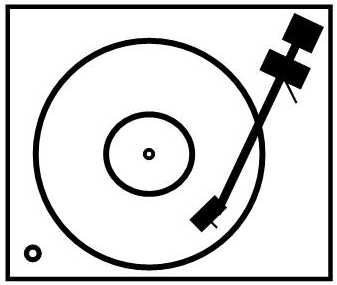
Pladespilleren.dk - who am i? - look here
Denafrips Terminator II - R2R DAC of the highest carat
Terminator II - ca. DKK 32,830 incl. VAT and freight. + 950, in customs. (approx. 4.500 Euro)
(Purchased via LINK! Vinshine Audio in Singapore) 2 months delivery time.
Latest update - 30 October 2021
Who
are Denafrips and what are R2R DACs? To answer the last question
first, we have to go back to the roots. A series of resistors
where values are switched between 44.1 times per second (with CD) and
thus an analog signal is created. Further explanation will come later.
The first of its kind was the Philips 1541 chip, but subsequently they
are built discreetly with precision resistors. The first R2R DAC I came
across was the Danish Soekris. However, they did not reply to
my mails. Later I have very briefly tried a ROCKNA from
Serbia. An absolutely excellent DAC that tempted a lot. But at the same
time, I stumbled upon Denafribs from China. They make a lot of high-end
hifi products, but are best known for their R2R DACs. The company was
founded back in 2012 and now has more than 40 employees. The founder
Mr.Zhao has brought together a team of competent employees with
extensive knowledge of both analog and digital circuits and solutions.
The sale takes place via the web from Singapore, where Alvin Chee at
Vinshine Audio is responsible for orders and customer contact, and not
least provides an excellent service.
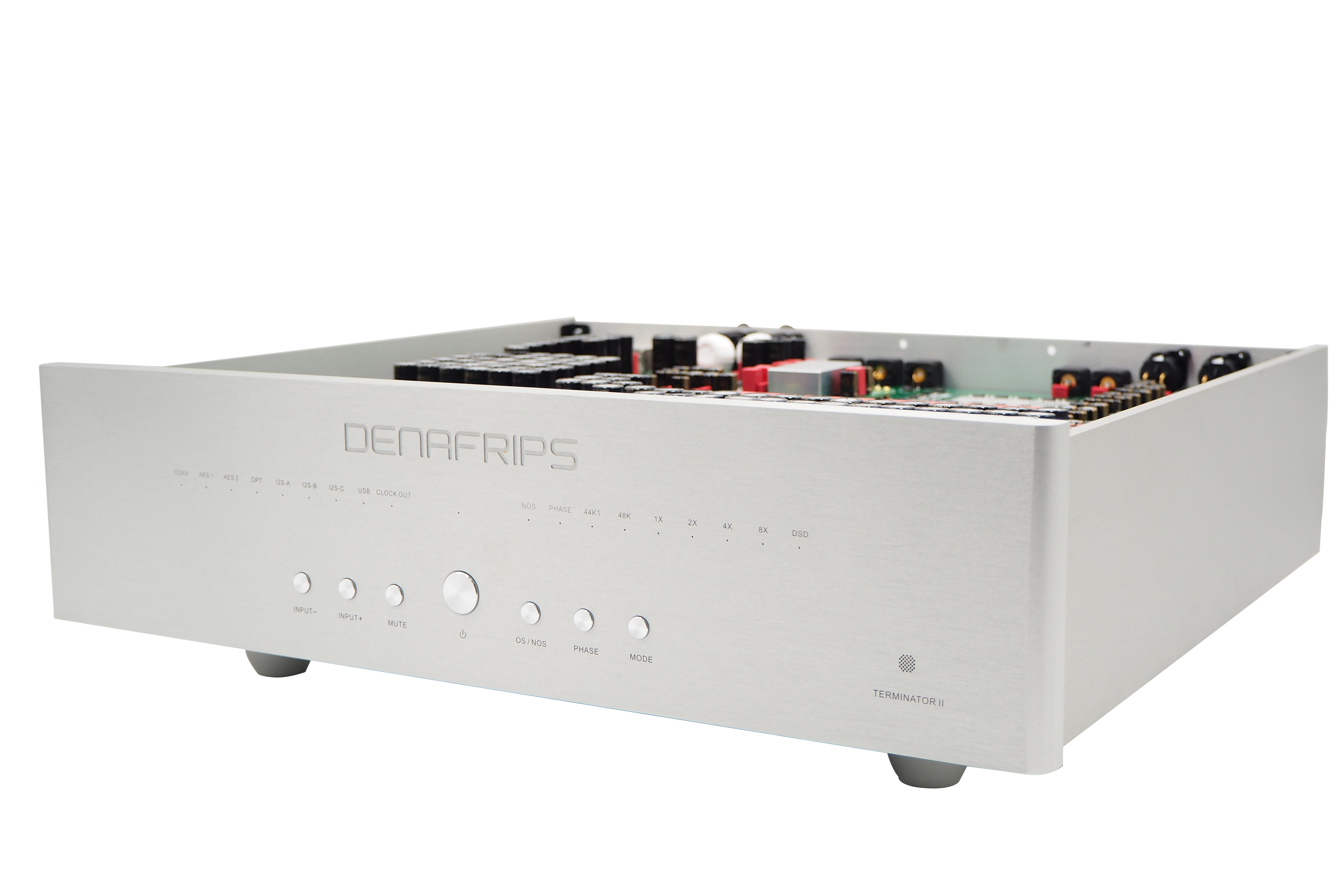
DENAFRIPS stands for:
D-ynamic
E-xquisite
N-atural
A-ttractive
F-idelity
R-efined
I-ntoxicating
P-ure
S-ophisticated
In
other words, absolutely no modesty here, although these
descriptions are a bit sought after. I think they came up with the
catchy name first and then put the designations on afterwards?
It
takes a lot of consideration before sending DKK 32,000 to the other
side of the world, but I was now fairly sure. Have heard Denafrips
Pondus II and have via a user forum on FB seen what several others
write about Terminator II.
Shortly after my order, I received an
email from Alvin Chee at Vinshine Audio. MY DAC was now being
assembled. Expected shipment within 5-6 weeks. Mid-September another
email from Alvin. MY DAC was assembled. It would be thoroughly tested
at all inputs and outputs. Then 100 hours of operation and new
measurements. If all specifications are then OK, it would be packed in
double packaging and shipped to Denmark. Extremely reassuring!
Top DAC - Terminator II
Terminator
II is number 2 from the top in Denafrip's DAC programme. There is also
a Terminator Plus. The extra price is approx. DKK 12,000. I asked Alvin
Chee what the differences really were. He responded very quickly.
”The differences between the Terminator II and Plus, the Terminator Plus comes with premium offerings of:
Aluminum anodized curvy front panel
Precision, hand-picked, premium OCXO clock
Hand-picked R-2R board
Hope this helps! ”
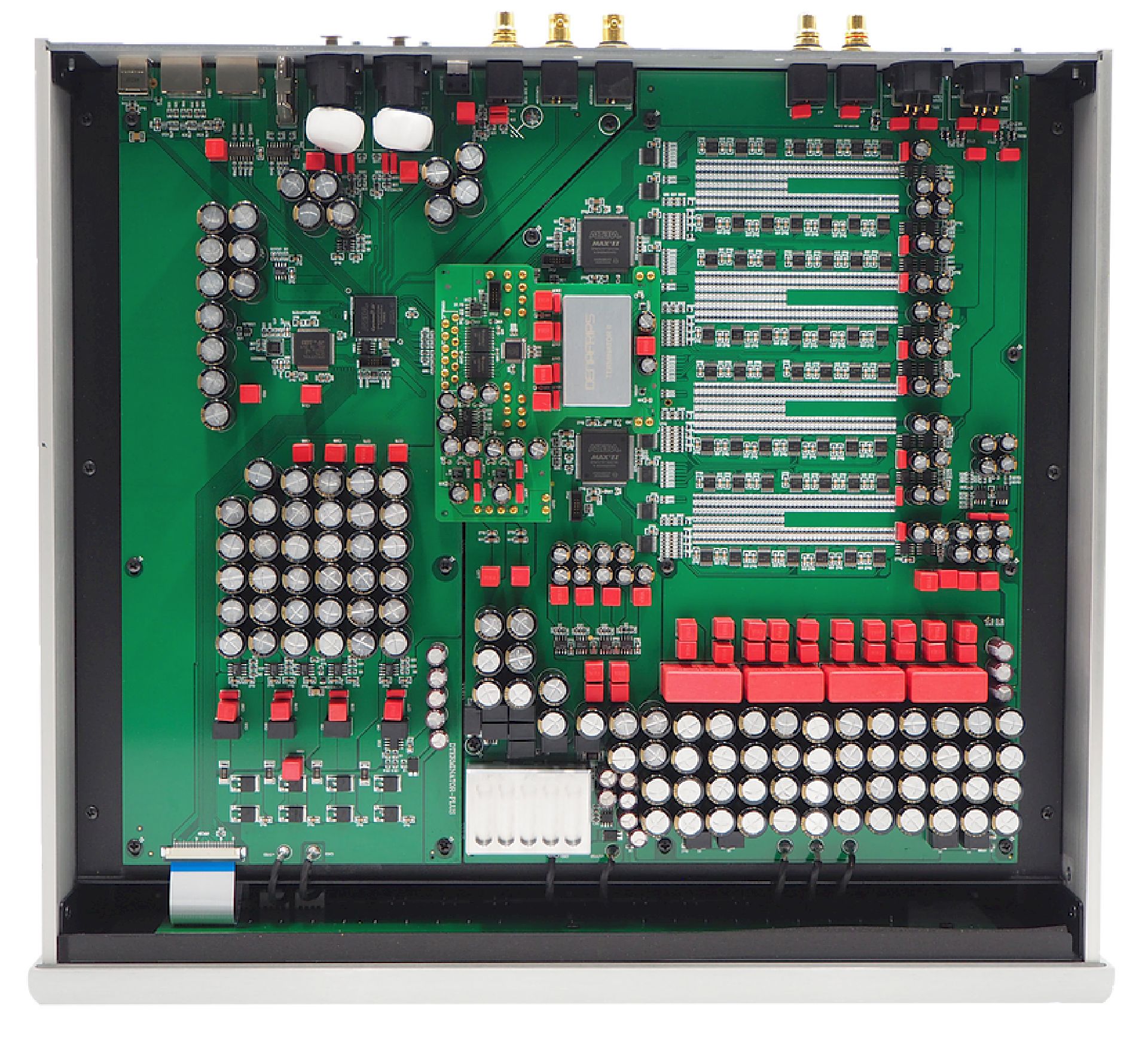 I
stuck to Terminator II, which in itself offers impressive facilities
and data. Here a selection - the complete list, you can see on
Denafrip's website:
I
stuck to Terminator II, which in itself offers impressive facilities
and data. Here a selection - the complete list, you can see on
Denafrip's website:
*True balanced 26BIT R2R + 6BIT DSD (32 steps FIR Filters)
* Matched Precision Thin Film 0.005% R-2R Network Arrays
* Encapsulated Flagship Ultra Low Noise Power Supply
* Oven Controlled Crystals OCXO Adaptive FIFO Buffer Reclocking
* New Improved Digital Signal Processing FPGA Code DSD1024, PCM1536 Supports On USB & I˛S Input
* Proprietary USB Audio Solution via STM32F446 Advanced AMR Based MCUt
* DSD64-DoP On All Input
* DSD1024 * On USB & I˛S Input Only
* 24bits / 44.1, 48, 88.2, 96, 176.4, 192KHz On All Input
* 1536kHz * On USB & I˛S Input
* RCA at 2.0Vrms , 625 Ω - XLR at 4.0Vrms, 1250 Ω
* SN Ratio: 127dB
* Dynamic Range:> 132dB
Delivery to the door
Two
months after ordering, a 22 kg (40 lbs) package arrived with FedEx. But
before then, I had been continuously notified and could follow the
package all the way. Vinshine Audio also briefed me. After the
delivery, there was follow-up and emails about everything now being OK?
Super service. The converter comes in a very solid double wrap with
lots of foam around. The Terminator II itself is packed in a black
fabric bag. The only "extra" that is included are 3 small "spikes"
which fit into the holes on three feet under the device. Somewhat
difficult to mount due to the weight of the DAC.
The new DAC
quickly came up on a shelf and there was sound through right away.
Everything worked. But one just has to make it clear that this is not
an impressor. The small lights are very dim and for me they were a
little hard to see. The same can be said about the text on the front,
which I could not see at all without a magnifying glass. Maybe a little
bigger text in the next version? On the other hand, it only took a
couple of weeks before I knew what the buttons should be used for.
Note that there is no remote control nor volume control. Not even an
on/off switch. When the mains cable is mounted, the Terminator
starts in "standby".
A little technique - how and why
One
cannot help but notice that Denafrips has made some choices. It is in
many ways a different DAC. It will tempt some and others will say no. I
fell for their solutions and choices, although I do not agree
100% all the way.
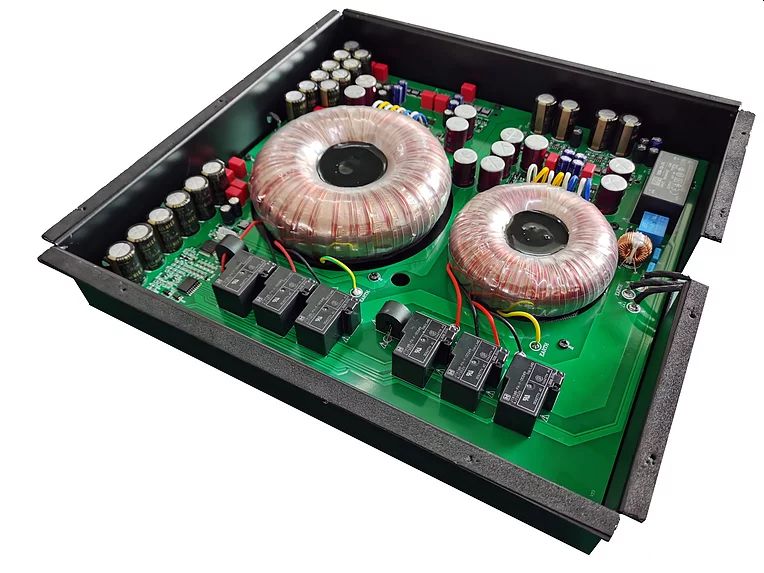 We
start where it all starts - a tremendous power supply.
Encapsulated in its own steel cabinet. This can be found at the bottom
of Terminator II. Here are two large O-core transformers (160 and 60
VA) each with subsequent regulation and lots of decoupling. You look
for a network fuse in vain. It does not sit on the outside either.
On the DAC board itself, there are almost 100 small Elna Silmic
capacitors and subsequent decoupling with the red WIMA film capacitors.
Definitely not bad! I do not see the values, but 2 x 7V / 5A are
supplied for the ladder DAC itself, so there is plenty of power
available. A power supply that could almost drive a power amplifier.
Why not a regulated supply, as you usually see in high-end electronics.
Possibly.a shunt regulation? Well enough, the many parallel connected
capacitors give a nice low ESR and they can supply a lot of power, but
is there a need for it and is not it a bit old-fashioned and
resource-intensive way to do it? Well but the wages are low so
Denafrips has chosen this solution and all respect for it.
We
start where it all starts - a tremendous power supply.
Encapsulated in its own steel cabinet. This can be found at the bottom
of Terminator II. Here are two large O-core transformers (160 and 60
VA) each with subsequent regulation and lots of decoupling. You look
for a network fuse in vain. It does not sit on the outside either.
On the DAC board itself, there are almost 100 small Elna Silmic
capacitors and subsequent decoupling with the red WIMA film capacitors.
Definitely not bad! I do not see the values, but 2 x 7V / 5A are
supplied for the ladder DAC itself, so there is plenty of power
available. A power supply that could almost drive a power amplifier.
Why not a regulated supply, as you usually see in high-end electronics.
Possibly.a shunt regulation? Well enough, the many parallel connected
capacitors give a nice low ESR and they can supply a lot of power, but
is there a need for it and is not it a bit old-fashioned and
resource-intensive way to do it? Well but the wages are low so
Denafrips has chosen this solution and all respect for it.
But
otherwise there are some impressive moves. The actual USB input is
provided with their own driver. Here they have dropped the otherwise
used and developed a driver intended for hifi. There are downloads for
suitable drivers for Windows and MAC. The built-in "oven
controlled" OCXO clock delivers precision frequencies at a level far
above what is required for low jitter. But like much else, It has
been a bit of sport making it better and better.
What is R2R?
An
R2R DAC is built with a wide range of resistors. In other words,
voltage dividers in a network with different resistors. The network
in Terminator II is built discreetly with approx. 500 0.005%
precision resistors in each channel, giving a 26-bit resolution.
Switching between the different resistors is made with a so-called
FPGAs (Field Programmable Gate Arrays). The principle has been known
since the first Philips 1541 circuit, but it requires precision
resistors and accurate control. Some believe that chip solutions still
have their legitimacy, while Denafrips (and others) have developed
their own discreetly built R2R DAC solutions. Note that this one is
double. So a fully balanced DAC. The signal is taken directly at the
output, without additional circuits that can change the
sound.Apparently, however, AC coupling with polypropylene capacitors
has been used on the output.
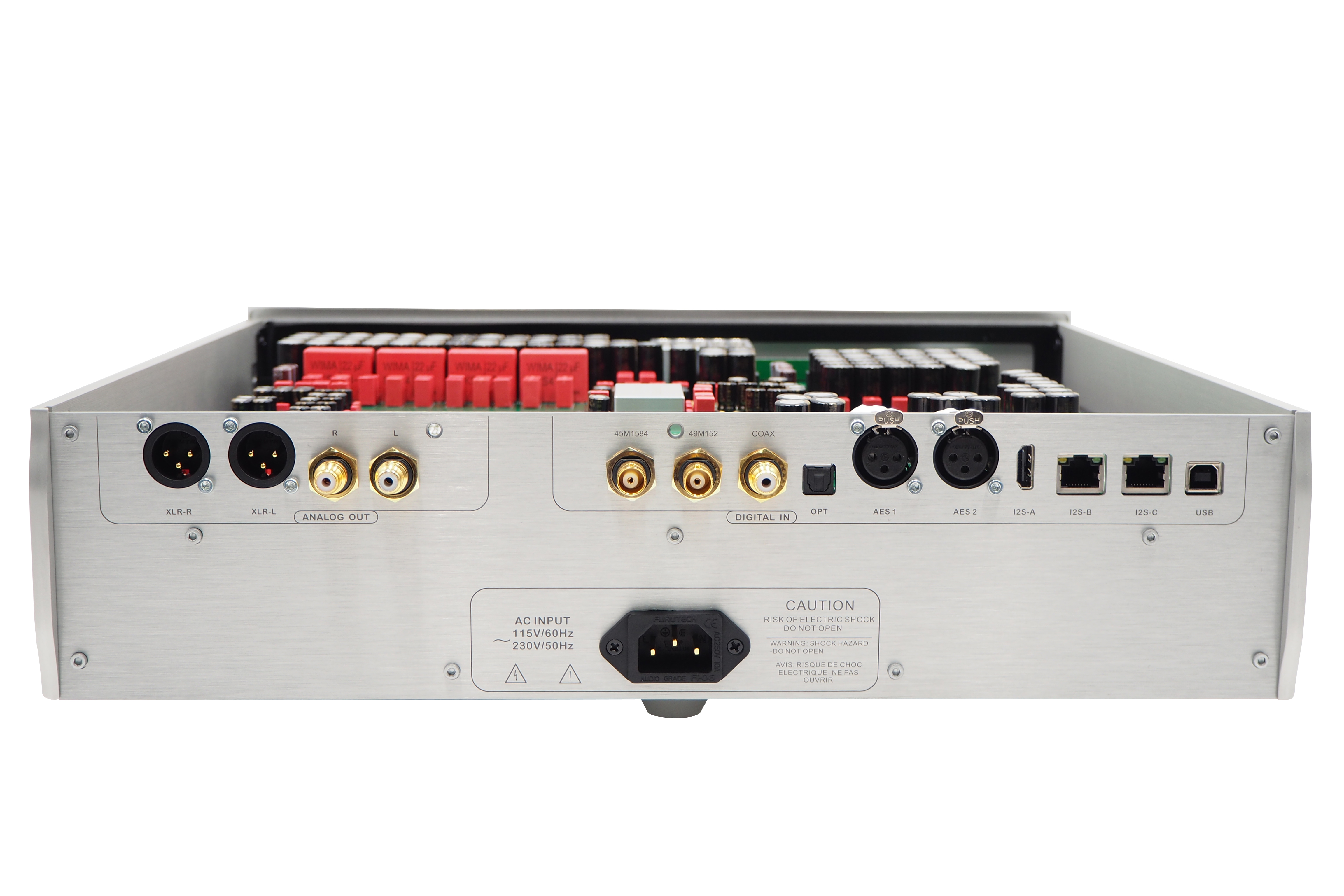 NOS or OS
NOS or OS
Immediately,
I prefer the sound with OS oversampling. There is a finer-grained
rendering with a bit more space. All of the following descriptions are
with oversampling. Some have suggested doing the oversampling in Roon
and then running Terminator II at NOS. I have not tried that.
How I did
Terminator II was used with the following equipment:
Signal
sources Innuos Zenith III via Tellutrium Q Silver Diamond USB cable.
Music from Qubuz and downloaded HD and DSD files. CDs on my
Meridian 500 CD transport with AES / EBU out.
Connected to MICHI P5 preamplifier via Odin XLR.
The supplied feet were tried, but most of the time I drove with Black Diamond Racing Cones.
The sound of R2R
Right
from the start, it is quite obvious that this is a fluid, clear and
effortless rendition. It is very different from what many people
experience as "good", "beautiful" and "impressive". Gone is all the
exaggerated and the sharp analytical brushing off of details. Here you
hear no shrillr and super detailed top that just sounds completely
isolatede and says "listen to me". Instead, you get a rendering.
that is physical and smooth. There is a naturalness that makes you
relax. After a while, you quickly find that it is all relaxing and you
listen through to the music. There is absolutely no listening fatigue
here and it all just seems so effortless and airy.
There is a
feeling that the music flows unhindered and smooth . I have experienced
the same thing before with pickups that play "matter of fact", so you
do not have to make an effort to listen for details. The same is
absolutely true here. I sit and listen to Dire Straits / Fade to black.
A number I've heard many times before, but now it's just so smooth and
immediate. Not that it lacks anything. Absolutely not. It's just more
than top, bottom, midrange and space. Here it is a unified whole, where
it is not at all necessary to focus on anything special. If you
absolutely must do it, then it must be the large and very well-defined
space. Yes, space deserves to be mentioned. Here, if possible, there is
even more space behind the speakers when the best recordings are
allowed to play through Terminator II.
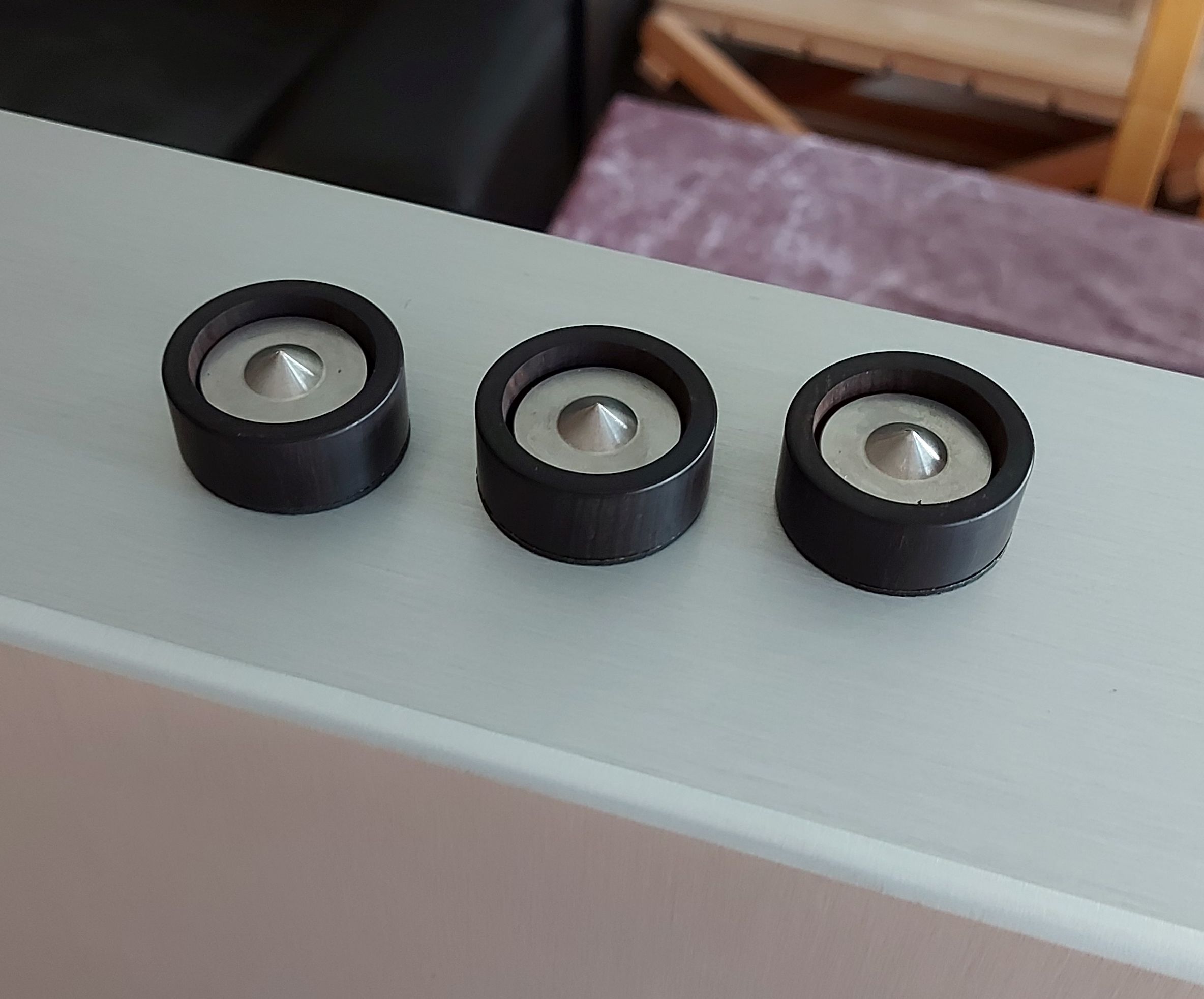 Terminator
II plays with a natural flow and a physical 3-dimensional
presentation. Even on an old record that I have heard thousands of
times (almost), I hear something new. Here Pink Floyd / The Wall, which
in an almost alluring way reveals new details and small things deep in
the soundstage. Not because the details are drawn out and focused on,
but because I, as a listener, am almost sucked into the music and
have a much easier time experiencing the details. Definitely a very
positive trait, because it's not something you have to make an effort
to hear - it's just there.
Terminator
II plays with a natural flow and a physical 3-dimensional
presentation. Even on an old record that I have heard thousands of
times (almost), I hear something new. Here Pink Floyd / The Wall, which
in an almost alluring way reveals new details and small things deep in
the soundstage. Not because the details are drawn out and focused on,
but because I, as a listener, am almost sucked into the music and
have a much easier time experiencing the details. Definitely a very
positive trait, because it's not something you have to make an effort
to hear - it's just there.
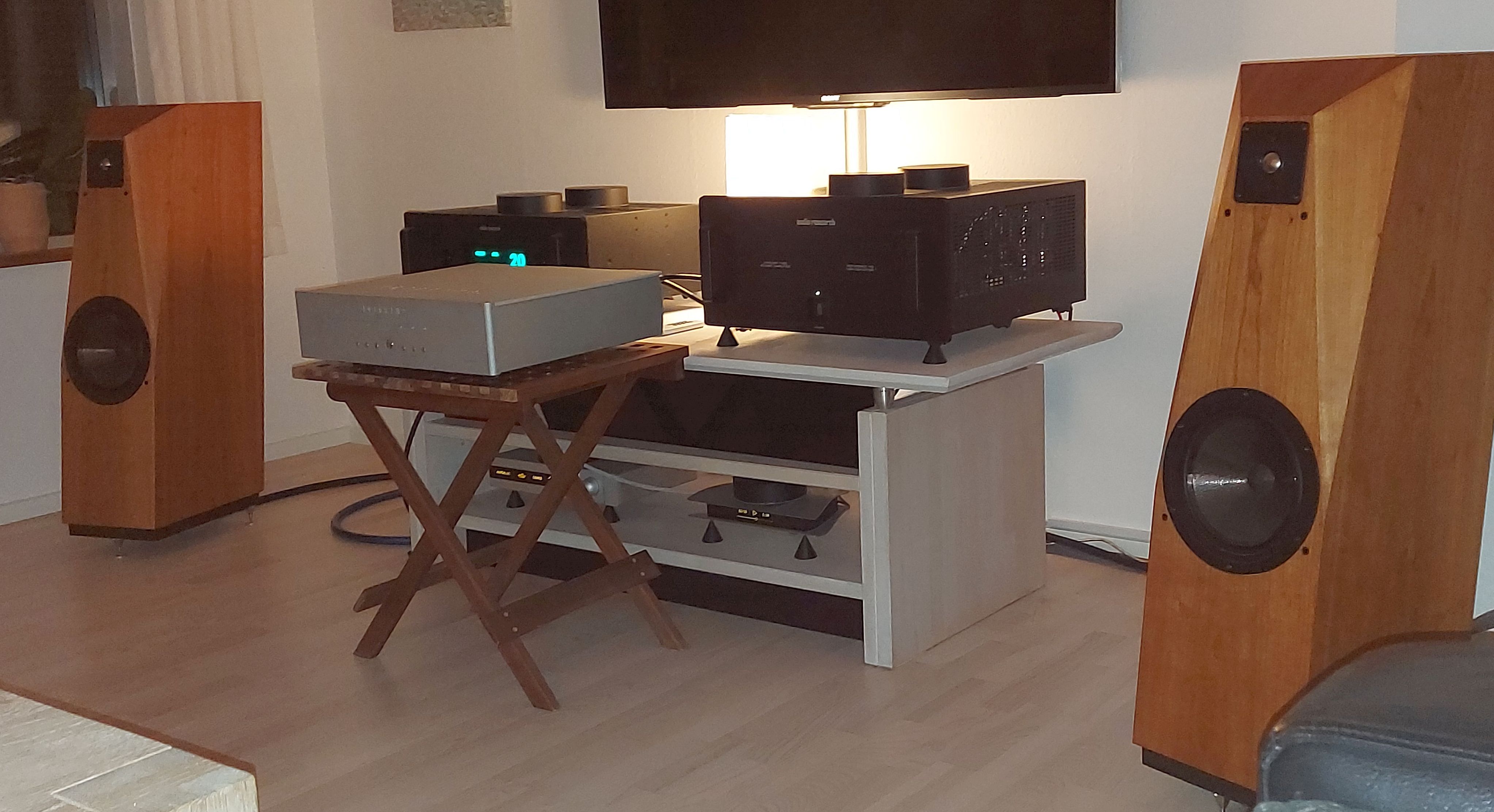 Visiting Carsten
Visiting Carsten
Here,
Terminator II was paired with a set of Audio Research amplifiers. We
used an Auralic streamer and Auralic Vega DAC. There were cables
from SoTM, Synergistic, Furutech, ViaBlue and others. There was broad
agreement that these were somewhat different sound philosophies. The
auralic dac was more physical and forward with more power at the
bottom. Via Terminator II, I thought there was more air and distance as
well as definitely more resolution throughout the voice range. It was
somewhat more reticent in the lower octaves. The bass was there, but it
did not really appear in the room. Terminator II played warmer, rounder
and very organically comfortable. Which one was preferred depended
somewhat on the music being played. I had chosen Imelda May and Karen
Souza, where I perceived their voices more detached from the rest. You
can say,that the voices hung better defined in the space between the
speakers. Carsten had chosen a live number with Kim Larsen "Pianomand".
Here there was a bit more snap and floor trampling via Auralic,
but the voice was more full via Terminator II. These impressions
greatly confirmed what I had experienced through my own system.
Carsten's
remarks: "Terminator II was, as expected, very competent, but had its
characteristics, which in some respects made it really good, but in
others not so good. What I have heard from other R2R dacs - eg Rockna -
had a nice open and organic tube like midrange with plenty of
space around things and a nice calm.In return, I think that TII across
the spectrum was a bit too "heavy" with barely the dynamics I'm used to
and especially not seen in relation to the Rockna R2R dac. It was
exceptionally dynamic and open in the midrange - but on the other hand
a bit on the bright side. In this price range we probably can not get
everything in one DAC. "
As can be seen in the picture,
Terminator II did not get ideal conditions, A somewhat flimsy table,
where the differences on various feet were not unambiguous either.
Maybe this placement had an impact on the end result? At first glance,
I would think we could have achieved a better result placed in the
stable shelf where the rest of the equipment were. At first glance, I
do not share Carsten's view on the heavy and less dynamic.
Visiting René
One
rainy afternoon I was picked up by Renë. We had to listen to Terminator
II using his hifi system. Here it was a Danish TubeLab preamplifier
connected to an Audio Reserach VT 100 III poweramp, which powered the
classic Snell 3Ai speakers. On the digital side, there was an Auralic
Aries streamer connected to an Auralic Vega DAC. There were cables from
ViaBlue, Audiovector and others. Both DACs got the same feet (Mad
scientisk Black pod Tungsten), mains cables and signal cables. Only
streaming music from Qobuz was listened to. I had chosen a few numbers
that we put out with.
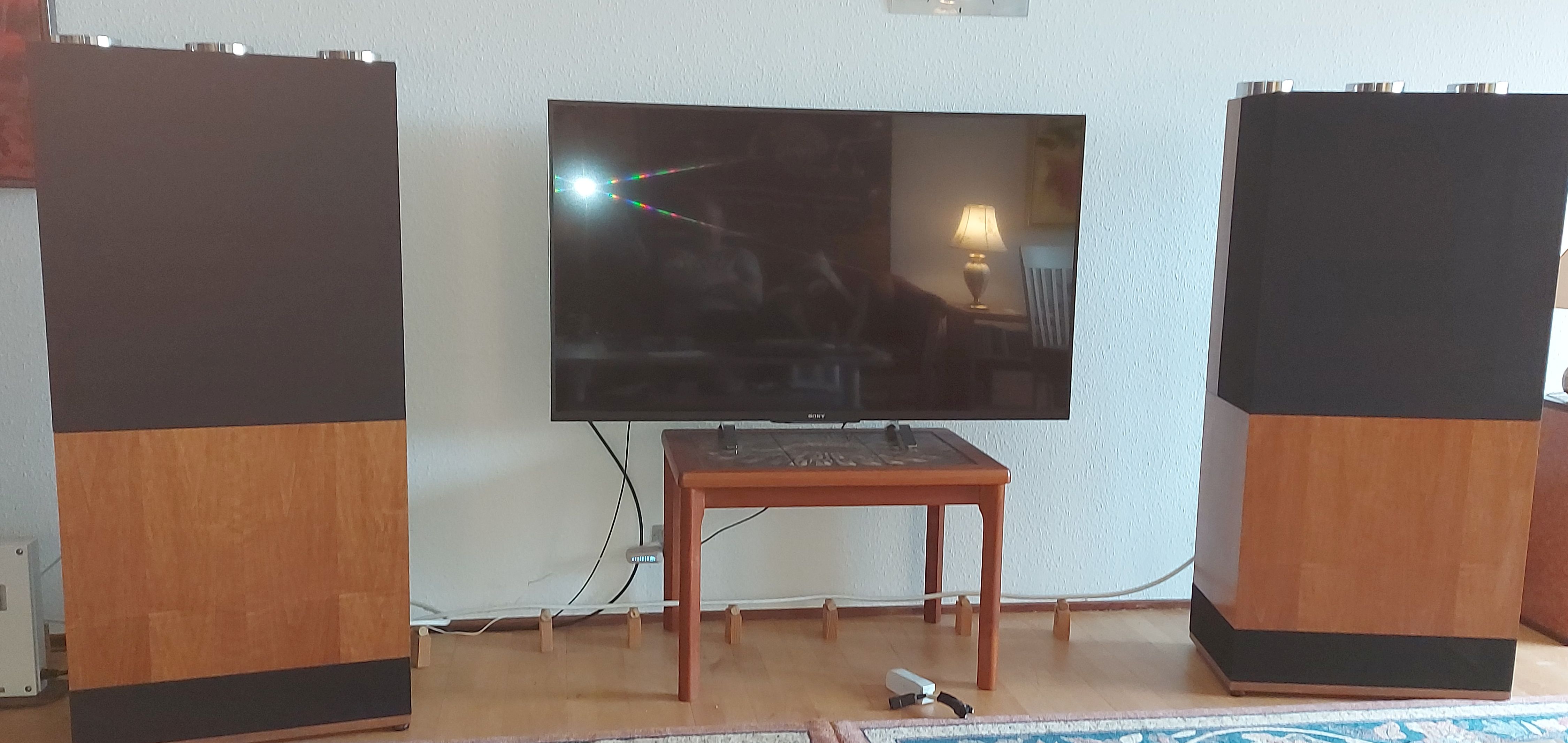 | 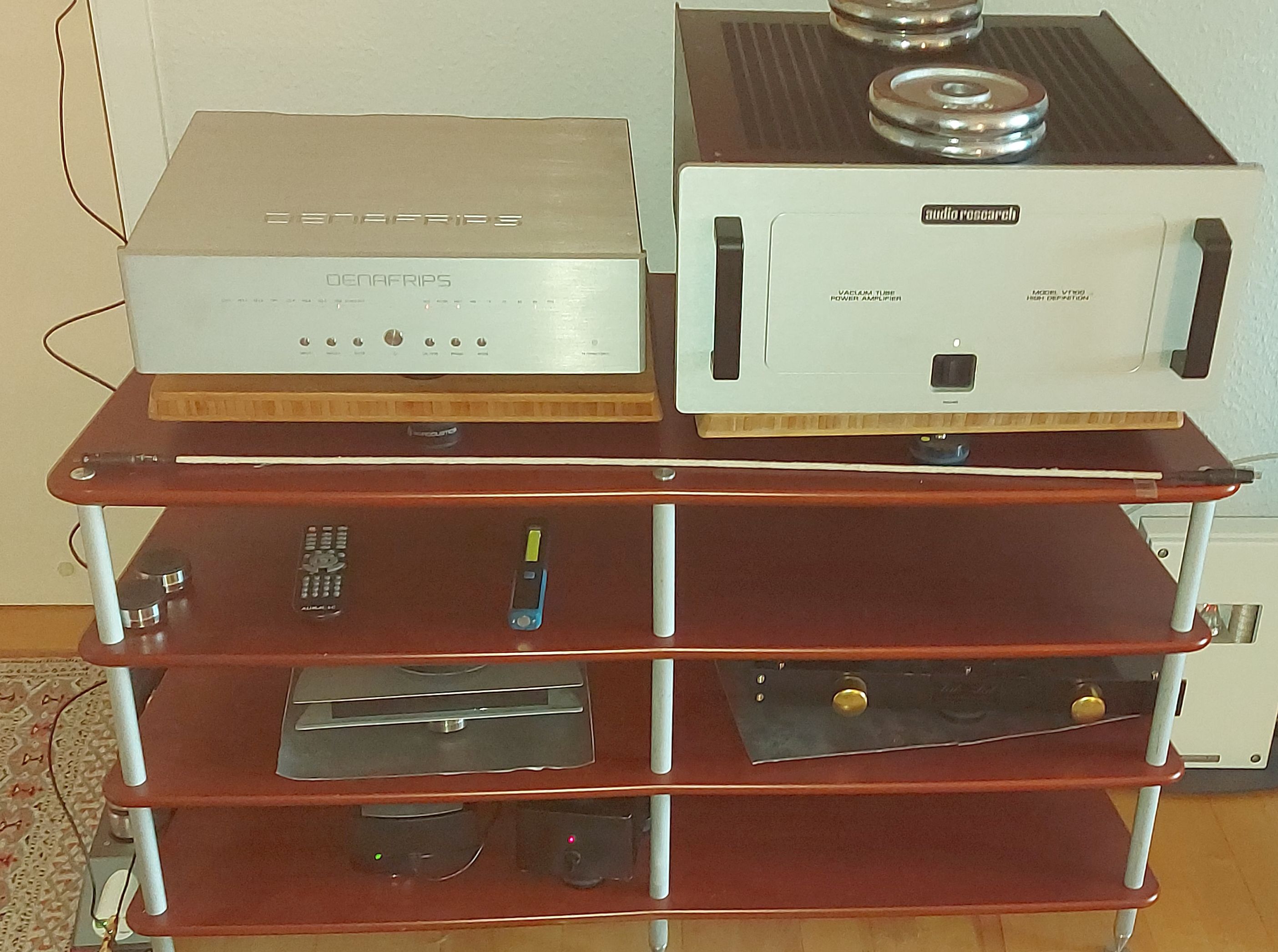 |
I
started with Imelda May / Call Me - a number I know well. The sound via
René's system was at once precise and very revealing. The voice stood
out nicely between the speakers. It is clear that the room as well as
the equipment were well tuned. Then we played a few songs with
Norwegian Anna Ternheim, which Rene had chosen. Super recording and a
good voice. After several tracks and approx. ˝ hour with René's
system, we switched to Terminator II, which had been heating up for a
while.
A number of things happened with Terminator II switched
in the system. Primarily, it was the room that grew and the voices
stood with a greater self-assurance and body not just between the
speakers, but also a little further away. All details were still
intact. On the other tracks, it was the same feeling of size and more
body up through the midrange. On a few tracks, we sensed a slight
tendency to move the leading edges of percussion and guitar strings a
little further back, so that it was less defined. Someone felt a
little dynamically reluctant in this area, but I personally do not
think it was annoying. Again, there is a little more distance and the
sound does not come so much up on your lap. At the bottom and the top,
there were not many comments. It all hung together.
Maybe as a joke
René said he would consider buying my Terminator if I ever wanted to
sell it. Probably not just yet, it has just arrived. But it showed
very well that he liked what he heard.
 I2S and DDC Reclockers. what is it now?
I2S and DDC Reclockers. what is it now?
Terminator
II has a lot of inputs. Among them are two options for a parallel
I2S input via either a LAN or a HDMI connection. The inputs are made
for use with Denafrip's own DDC reclockers (Digital to Digital
converters) or with suitable drivers for e.g. PS Audios CD / SACD
drive. There are three DDC reclockers in the program and the top model
Gaia (approx. DKK 11,000) also has the option of synchronizing the
clock frequencies via BNC cables to Terminator II's clock outputs. The
digital signal then runs from Gaia to Terminator II via a (high
quality) HDMI cable. The advantages should be that the signal is
cleaned and reclocked and split up into the 3 signals that the DAC
uses. Users report even more air and depth in the soundstage. Now it's
starting to get difficult for me who would rather set up a couple of
turntables,than messing with all the digital. But for those interested,
there is more on Denafrip's website about I2S, or on
Wikipedia . If at some point I had to decide on a Gaia DCC. then i for
sure will telle about it on this page "www. pladespilleren.dk".
Analog or digital
I
certainly do not want to take up this eternal discussion again. I live
just fine with my music from CD, streaming, tape recorders and LPs. But
my heart is still with the big black LPs. Although my digital chain
with Terminator II is reasonably expensive, I have invested
significantly more in the analog chain. That is, turntable, arms and
cartridges. That's how I prefer it and I would not describe one as
"absolutely better" than the other. I have just concluded that I can
enjoy both analog and digitally reproduced music, the latter now even
better via my new DAC.
Conclusion
Terminator II is definitely
an excellent DAC. It has its virtues and its own way of reproducing.
The really big force is the big open listening window. Lots of space
and an almost three-dimensional physical way to reproduce musicians and
singers behind the speakers. One can hear around it all. It's not just
cardboard figures, but there are bodies and people behind. The whole
thing is then paired with an openness and details that are not thrown
in your face, but lie there naturally. At the lower octaves there
is body and fullness, but it is done again in a slightly subdued way.
Front edges on percussion instruments or guitar stand a little further
back and do not quite as easy load the room. Some believe there is
a lack of dynamics and a "shallow" tendensy, I do not agree, but then
again it may be discussed. But there is good power in the
sub-woofer octaves, where it in the upper bass is again a bit its own.
Here we have it a little polite and careful, so as not to frighten
anyone. I like this way of reproducing and now enjoy the music
from the digital media even more.
.
Inspired by Denafrips, I can aptly say that TERMINATOR stands for
T-iming
E-xstraordinary
R-ealistic
M-usical
I-nvolvingl
A-ppealing
T-empting
O-pen
R-efreshing
All in all a super DAC, which definitely belongs among the best I have experienced. It stays where it is!
BACK TO THE FRONT PAGE (in Danish)
![]()


 I
stuck to Terminator II, which in itself offers impressive facilities
and data. Here a selection - the complete list, you can see on
Denafrip's website:
I
stuck to Terminator II, which in itself offers impressive facilities
and data. Here a selection - the complete list, you can see on
Denafrip's website:  We
start where it all starts - a tremendous power supply.
Encapsulated in its own steel cabinet. This can be found at the bottom
of Terminator II. Here are two large O-core transformers (160 and 60
VA) each with subsequent regulation and lots of decoupling. You look
for a network fuse in vain. It does not sit on the outside either.
On the DAC board itself, there are almost 100 small Elna Silmic
capacitors and subsequent decoupling with the red WIMA film capacitors.
Definitely not bad! I do not see the values, but 2 x 7V / 5A are
supplied for the ladder DAC itself, so there is plenty of power
available. A power supply that could almost drive a power amplifier.
Why not a regulated supply, as you usually see in high-end electronics.
Possibly.a shunt regulation? Well enough, the many parallel connected
capacitors give a nice low ESR and they can supply a lot of power, but
is there a need for it and is not it a bit old-fashioned and
resource-intensive way to do it? Well but the wages are low so
Denafrips has chosen this solution and all respect for it.
We
start where it all starts - a tremendous power supply.
Encapsulated in its own steel cabinet. This can be found at the bottom
of Terminator II. Here are two large O-core transformers (160 and 60
VA) each with subsequent regulation and lots of decoupling. You look
for a network fuse in vain. It does not sit on the outside either.
On the DAC board itself, there are almost 100 small Elna Silmic
capacitors and subsequent decoupling with the red WIMA film capacitors.
Definitely not bad! I do not see the values, but 2 x 7V / 5A are
supplied for the ladder DAC itself, so there is plenty of power
available. A power supply that could almost drive a power amplifier.
Why not a regulated supply, as you usually see in high-end electronics.
Possibly.a shunt regulation? Well enough, the many parallel connected
capacitors give a nice low ESR and they can supply a lot of power, but
is there a need for it and is not it a bit old-fashioned and
resource-intensive way to do it? Well but the wages are low so
Denafrips has chosen this solution and all respect for it. NOS or OS
NOS or OS Terminator
II plays with a natural flow and a physical 3-dimensional
presentation. Even on an old record that I have heard thousands of
times (almost), I hear something new. Here Pink Floyd / The Wall, which
in an almost alluring way reveals new details and small things deep in
the soundstage. Not because the details are drawn out and focused on,
but because I, as a listener, am almost sucked into the music and
have a much easier time experiencing the details. Definitely a very
positive trait, because it's not something you have to make an effort
to hear - it's just there.
Terminator
II plays with a natural flow and a physical 3-dimensional
presentation. Even on an old record that I have heard thousands of
times (almost), I hear something new. Here Pink Floyd / The Wall, which
in an almost alluring way reveals new details and small things deep in
the soundstage. Not because the details are drawn out and focused on,
but because I, as a listener, am almost sucked into the music and
have a much easier time experiencing the details. Definitely a very
positive trait, because it's not something you have to make an effort
to hear - it's just there. Visiting Carsten
Visiting Carsten

 I2S and DDC Reclockers. what is it now?
I2S and DDC Reclockers. what is it now?